



Joshy Joseph recalls the time he tricked Aribam Syam Sharma into deep conversations. Syam Sharma had agreed for a very short session, after every 15 minutes, he’d signal Joseph to pack up, even claim that he “can’t express…like the young people, who can talk”. Joseph kept pretending that he’d ask just “one last question”. The conversations, divided into chapters, converge into the documentary Aribam Syam Sharma: Laparoscopic Cinemascapes (2021), Joseph’s swansong at the Films Division. The documentary was screened at the ongoing 76th Cannes Film Festival, alongside the octogenarian Syam Sharma’s classic Ishanou (The Chosen One, 1990), which returned restored to the film festival, as Cannes Classics, after competing in Un Certain Regard category in 1991 (the last Indian film in the category was Nandita Das’ Manto in 2018).
Laparoscopic Cinemascapes is the final in three documentaries on legends, the other two on Bengali writer-activist Mahasweta Devi and Odia filmmaker Nirad Mohapatra. None is a hagiography.
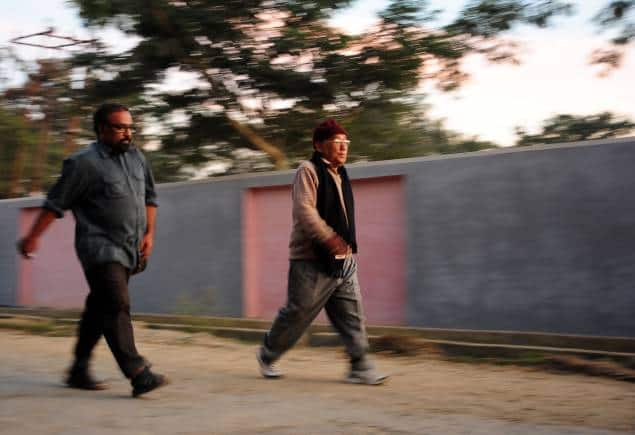 Filmmakers Joshy Joseph (left) with Aribam Syam Sharma in a still from the documentary 'Laparoscopic Cinemascapes'.
Filmmakers Joshy Joseph (left) with Aribam Syam Sharma in a still from the documentary 'Laparoscopic Cinemascapes'.
Syam Sharma has another connect with the Cannes festival: World War II. If the festival’s first edition was delayed because of it, the child Syam Sharma’s life was upended by it, he lost his parents.
Joseph would playfully egg Syam Sharma about “seeing some strange birds descending from the skies as a child” and he immediately took Joseph “to the bunkers in his 110-year-old house and narrated the horrors of World War II”, “those were not birds but…bombs from the fighter jets. We had trenches dug up under our beds, where we would hide…lost my father and mother in the same year, we left for Brindaban, and we three brothers were brought up by our uncle and aunty, who gave us everything…’,” he says in the documentary. Joseph finally left his house after two-and-half hours of intense interaction, from which the 63-minute documentary, edited by Atish Nandy, was culled.
“Aribam Syam Sharma is a philosopher of cinema and his serenity always attracted me but neither do I belong to Manipur nor do I belong to his gharana of filmmaking,” says Joseph, the Malayali who was posted in Kolkata and had the charge of Film Division’s East and Northeast zones. Syam Sharma was perturbed it might turn into a “boring film” but after several viewings of the rough cut, he slept peacefully.
Last year, Manipuri cinema — churning 80-100 films a year against all odds — turned a golden 50 years old. At its pinnacle stands the 87-year-old Syam Sharma, who gave the music for and acted in the very first Manipuri film in Meitei language, Matamgi Manipur (1972), directed by Debkumar Bose. He would go on to put Manipur on the global cinema map, and yet the Dadasaheb Phalke Award eludes him.
It is a symbolic moment now that his film was shown at the global stage as Manipur has been limping back from an ethnic violence that had convulsed the Northeast state, killing at least 60 and displacing at least 30,000. Manipur’s complex socio-political reality would feature in the works of later filmmakers: the contemporary strife in Haobam Paban Kumar’s films, the complicated history (forced to become a part of India) and geography (sandwiched between an internal/state border with the Indian union and international border with Myanmar) in the films of Laimayum Surjakanta Sharma. The latter, chairman of Film Forum Manipur, can be seen in Samarth Mahajan’s documentary Borderlands (part of 2020 ‘Goes to Cannes’). But in filming Manipur’s culture as ethnographic fiction, “the chosen one” Syam Sharma’s oeuvre — steeped in local customs, universal emotions — is singular.
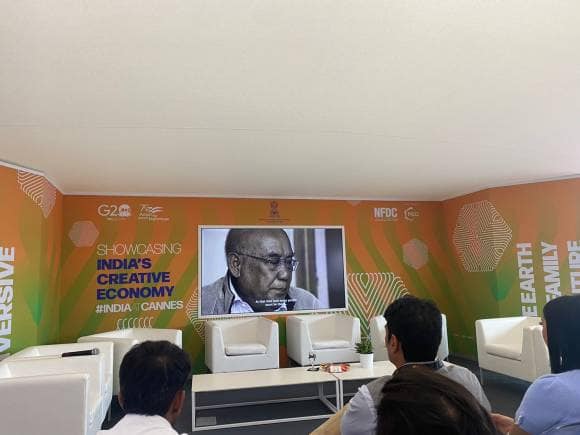 The documentary 'Laparoscopic Cinemascapes' screened at India Pavilion, 76th Cannes Film Festival, on May 19.
The documentary 'Laparoscopic Cinemascapes' screened at India Pavilion, 76th Cannes Film Festival, on May 19.
Ishanou is the first Manipuri film to be digitised, by Shivendra Singh Dungarpur’s Film Heritage Foundation, who’d restored and screened Malayali auteur G Aravindan’s Thampu (1978) at Cannes 2022. The negative of Syam Sharma’s classic had vinegar syndrome degradation, mould and warping, broken perforations, scratches, emulsion halos, and base distortion. Ishanou is one of Syam Sharma’s only two films (the other is Olangthagee Wangmadasoo, 1980) which his long-time writer-collaborator, Northeast’s literary stalwart Maharaj Kumari Binodini Devi wrote exclusively for the screen, and not an adaptation of her short stories. Syam Sharma also made a documentary on MK Binodini Devi.
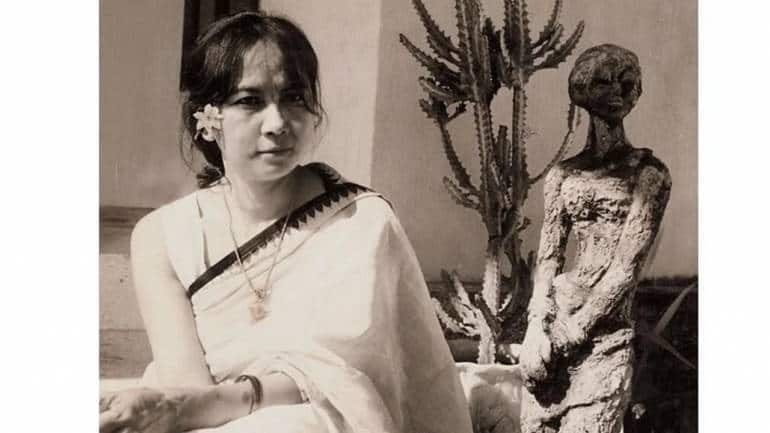 Aribam Syam Sharma’s ‘Ishanou’, written by Northeast’s literary stalwart MK Binodini Devi
Aribam Syam Sharma’s ‘Ishanou’, written by Northeast’s literary stalwart MK Binodini Devi
One enters the world of Ishanou almost like a nostalgic reverie, visiting one’s grandparents on a summer afternoon, passing by fields of swinging grass, a lull in the air. When you emerge from it, it leaves you feeling helpless, sad and strange, grappling with more questions than answers. A palpable void, that sinking feeling in the stomach, of a colossal loss.
Tampha (essayed by Anoubam Kiranmala) is a beautiful young woman and young mother. Ishanou is set in her fertile and verdant maternal village, where she and her husband Dhanabir (Kangabam Tomba) come for her daughter Bembem’s ear-piercing ceremony. She’s saving up to buy a scooter, roaming the markets. One day, she marvels at Kwaklei flowers on a tree and breaks into a song — the signifiers, or a Saussurean moment, of her invocation to maibi-ism, while her husband remains unaware. Another day, she emerges from a nearby pond laughing, acting childishly playful. Yet another day, the sight of fish out of water affects her mental stability. She declares she’s goddess Panthoibi (who rides a horse) — she visualises a maiba as a horse, which is a recurring creature in Syam Sharma’s films. The other significant symbolic image is of Tampha sitting inside the mosquito net on her bed, in a devotional pose, like a painting, but it’s not a close-up shot, which Syam Sharma has never been fond of, he says in the documentary. It at once brings to mind the image of the veiled faces of the Maha Raas-Leela gopis (classical Manipuri dancers). A foreshadowing.
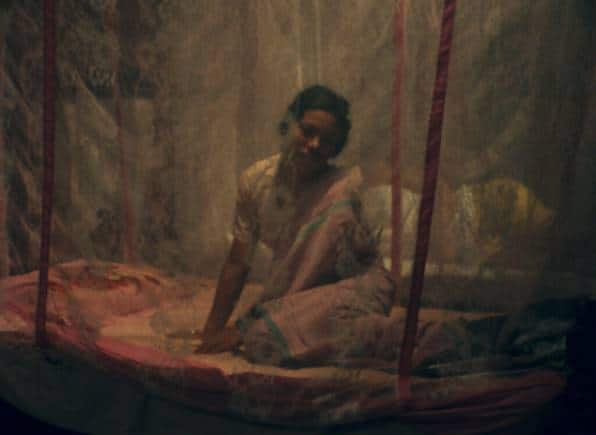 A still from 'Ishanou'.
A still from 'Ishanou'.
Tampha lives in blissful domesticity at her earthly mother’s house until the divine mother calls for her. Tampha talks to flowers, gets neurotic, violent fits, breaks into ritual dance or runs away into the forest in the middle of the night. She’s the “chosen one”, possessed by a benevolent, divine spirit, and transitioning into a maibi (priestess, female shaman, ritual folk healers). That a maibi’s daughter becomes a maibi too forces Tampha’s mother to send Bembem away with her father to Cachar. Later, when Tampha sees the two, a little older Bembem hasn’t been told about her mother’s existence and identity, the husband, too, has moved on. Tampha thinks of the daughter, unwilling of a similar fate for her in the future, and keeps the truth buried. She returns to the fold, immersing herself in maibi life and Lai Haraoba festival.
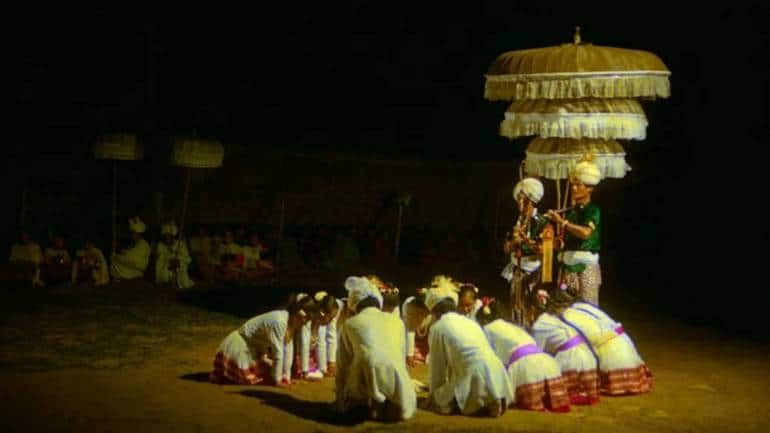 A still from Aribam Syam Sharma's 'Ishanou'.
A still from Aribam Syam Sharma's 'Ishanou'.
The Meitei’s divine, shamanistic maibi magic in Ishanou is unlike Souleymane Cissé’s classic Yeelen (1987; the Malian auteur has been conferred Carrosse d’Or at Cannes 2023) or Aravindan’s Kummatty (1979). Rarely is “possession” shown as a benevolent force, it almost always signals the demonic/evil, like in Polish director Andrzej Żuławski’s Possession (1981). A benevolent deity “chooses” Tampha to be a torchbearer, and yet, her desolation is reminiscent of Doyamoyee’s (Sharmila Tagore) from Satyajit Ray’s Devi (1960). Though, in the latter, the “force” is very much human, and makes a larger point about blind faith versus rationality, Syam Sharma, on the other hand, is making a “simple” film, bereft of any commentary.
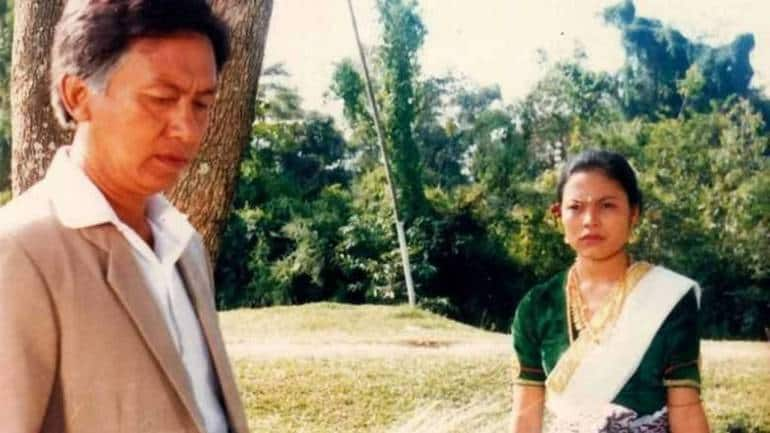 A still from 'Ishanou'.
A still from 'Ishanou'.
The maibi culture and Lai Haraoba festival is pre-Vaishnavite. The pre- (Khongjom Parba ballad) and post-Vaishnavite (Nata Sankirtana) art and cultural legacy of the Meiteis have remained alien to the world outside. Two essays — “The Maibi Tradition and Lai Haraoba” (2023) and “Women and Shamanism in Manipur and Korea” (2009) — respectively see the maibi (a dominant feature of Sanamahism, the traditional religion/folk practice of Manipur) as a “counterforce to the hegemonic sectarian influence of Hinduism”, and, like Korea’s mudang, as “pre-religious, pre-political and pre-philosophical”. “Shamanism is a way of life, of living in harmony, respect and oneness with all life forms”.
Syam Sharma’s “Manipuri Vaishnavite” cinema, spanning 15 features and 40-plus documentaries, an instance of ‘simple living, high thinking’, is just what Satyajit Ray had prescribed in his essay “What is wrong with Indian Films?” (1948), first published in Calcutta Statesman. The prophetic Ray wrote, “What the Indian cinema needs today…is a style, an idiom, a sort of iconography of cinema, which would be uniquely and recognizably Indian…its material in the more basic aspects of Indian life, where habit and speech, dress and manner, background and foreground, blend into a harmonious whole. It is only in drastic simplification of style and content that hope for the Indian cinema resides. At present, it would appear that nearly all the prevailing practices go against such simplification. The raw material of the cinema is life itself. It is incredible that a country which has inspired so much painting and music and poetry should fail to move the filmmaker. He has only to keep his eyes open, and his ears.”
In Joseph’s documentary, the Santiniketan-groomed Syam Sharma echoes, “What is the most important thing in Manipuri culture? I tried to find that out and make films on it with that vision. Simplicity, just like grass, is one of Vaishnavism’s most important tenets.”
The mother figure is of significance in Manipur’s Meitei culture, as benefactors, maibis, in fishing, and running the marketplace (like Tampha’s mother). And the state has seen the power of the feminine. Syam Sharma talks about an Ishanou shot in the documentary, that much to his cameraman’s chagrin he went ahead with an un-rehearsed shot of Tampha crying, her face not visible to the camera. “Women are associated with crying all the time, but the women of Manipur are not like that,” he says. Women, there, have risen in protest time and time again, because they have suffered the most in the state violence. The alleged rape and murder of 34-year-old Thangjam Manorama, by 17 Assam Rifles personnel in 2004, saw the “Mothers of Manipur”, a group of elderly women, strip in protest against the Army’s excesses; MK Binodini Devi returned her Padma Shri in protest; and Irom Chanu Sharmila sat on a 16-year-long hunger strike to demand the repeal of the Armed Forces (Special Powers) Act, 1958, or AFSPA. It has been lifted in many parts, not removed entirely from the state yet.
The year 1972 is significant not only because Manipuri cinema was birthed, Manipur’s Iron Lady was also born that year. The second chapter in Joseph’s documentary zooms in on file footages of Irom Sharmila with the umbilical-cord-like nasal-feeding tube. Those images, pervaded the media, but is distastefully taken, says Syam Sharma in the documentary. The same Syam Sharma who relinquished the close-up, unless necessary, in cinema, suggests that photographers should have focussed on Sharmila’s eyes, which speak volumes, than make her look ugly with that tube. It’s all about the angle. The anti-close-up filmmaker “asked me to go for a macro close-up of Irom Sharmila’s eyes,” says Joseph, who was able to eke out a “wonderful observation” exclamation from Syam Sharma on pointing out the contradiction.
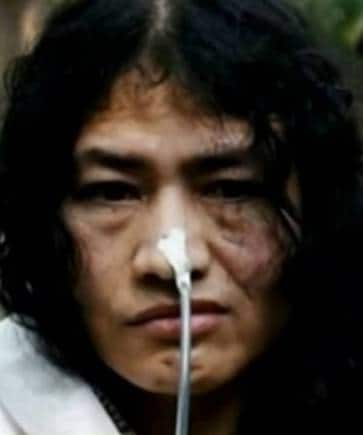 A file image of Manipur's Iron Lady, Irom Chanu Sharmila.
A file image of Manipur's Iron Lady, Irom Chanu Sharmila.
The first chapter of the documentary ends on the veiled faces of the RaasLeela dancers and segues into the unveiling of “a real-life epic moment from Irom Sharmila’s life. Syam Sharma and I sat for a day’s fasting at Imphal when Sharmila was entering her 10th year of fasting. She survived as a medical wonder. After 16 years of a world-record fasting protest, in 2016, Sharmila decided to end her struggle by tasting some honey drops. A battery of TV cameras waited for that historic moment at Imphal’s JN Hospital. After pouring the honey drops into her palm, from a smiling mood suddenly a turbulent melancholy struck her face. Two minutes of ‘to be or not to be’ moments. I found those two-minute duration footage has an epic dimension, where she could see her long 16-year struggle, reflecting on those honey drops,” says Joseph.
The political/symbolic reason to feature Sharmila in his documentary is to, through the best image of Manipuri resistance and resilience, voice his own “protest against the merger of (the government body) Films Division with National Film Development Corporation (NFDC)”. “The irony is that after Films Division dumped my film in their cans, NFDC recovered it and took it to Cannes this year,” says Joseph.
Discover the latest Business News, Sensex, and Nifty updates. Obtain Personal Finance insights, tax queries, and expert opinions on Moneycontrol or download the Moneycontrol App to stay updated!
Find the best of Al News in one place, specially curated for you every weekend.
Stay on top of the latest tech trends and biggest startup news.